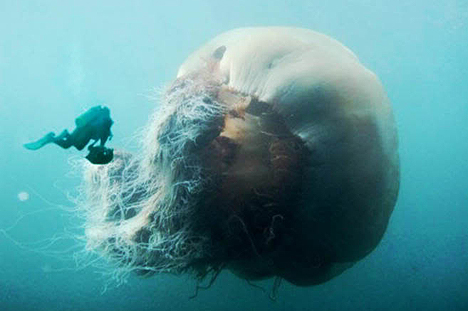
Saturday, April 2, 2011
Thursday, September 16, 2010
Saturday, August 21, 2010
Wednesday, July 21, 2010
Monday, March 22, 2010
Friday, March 19, 2010
Earths may be more common than we think
We are surrounded by dozens of habitable planets. We just can’t see them yet, according to a researcher.
In his new book, How to Find a Habitable Planet, geoscientist Jim Kasting suggests that the chances that each of the stars you see in the sky is being rotated by a planet capable of sustaining life are surprisingly high.
...

Thursday, March 18, 2010
Thursday, March 11, 2010
Tuesday, December 29, 2009
Friday, December 25, 2009
Interstellar Fluff has a strong magnetic field

...
Using data from Voyager, we have discovered a strong magnetic field just outside the solar system. This magnetic field holds the interstellar cloud together—"The Fluff"—and solves the long-standing puzzle of how it can exist at all.
The Fluff is much more strongly magnetized than anyone had previously suspected. This magnetic field can provide the extra pressure required to resist destruction.
The Voyagers are not actually inside the Local Fluff. But they are getting close and can sense what the cloud is like as they approach it.
...

Saturday, December 19, 2009
Science Stories of the Decade

There is no doubt that science has become more like science fiction in the past decade, with amazing innovations and discoveries that increased our understanding of the universe. We list ten of the biggest science stories from the past decade.
This was the decade of the first face transplant, the first extinct species brought back from the dead, and printable human tissue; a decade that brought us closer to synthetic life forms and the invisibility cloak. But we've whittled it down to ten of the decade's biggest science stories, with discoveries, advances, and topics that are sure to change our lives in the next ten years.

Thursday, September 24, 2009
Monday, September 21, 2009
Thursday, September 17, 2009
Friday, August 28, 2009
Friday, August 14, 2009
Better living conditions in other solar systems?
...
The Sun does not seem like the perfect star for a system where life might arise. Although it is hard to argue with the Sun's ‘success' as it so far is the only star known to host a planet with life, our studies indicate that the ideal stars to support planets suitable for life for tens of billions of years may be a smaller slower burning ‘orange dwarf' with a longer lifetime than the Sun ― about 20-40 billion years. These stars, also called K stars, are stable stars with a habitable zone that remains in the same place for tens of billions of years. They are 10 times more numerous than the Sun, and may provide the best potential habitat for life in the long run.
...
































